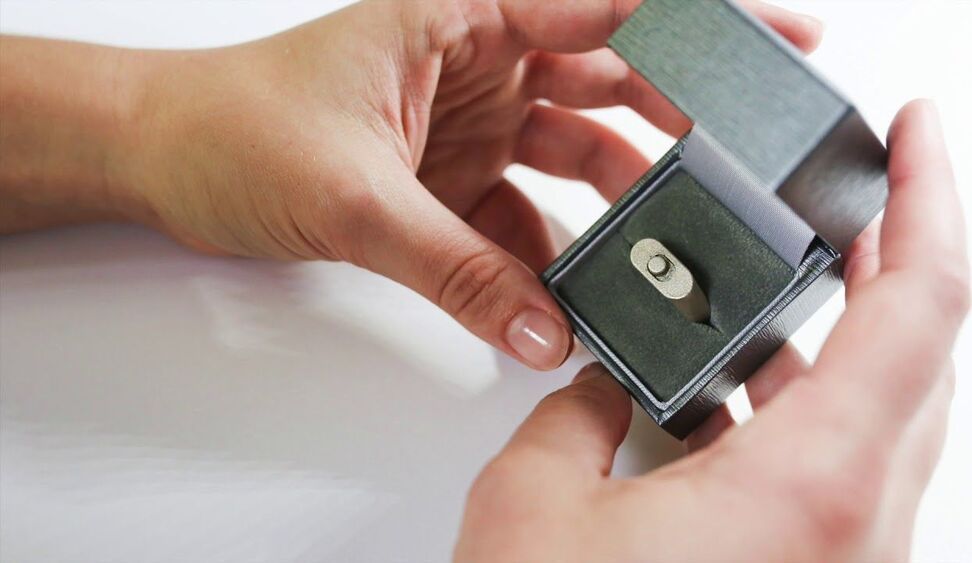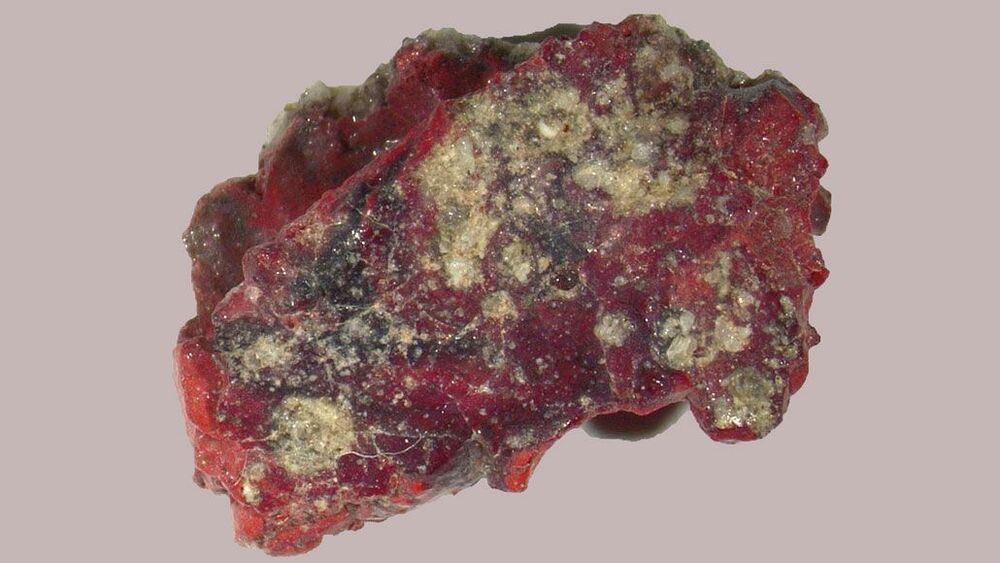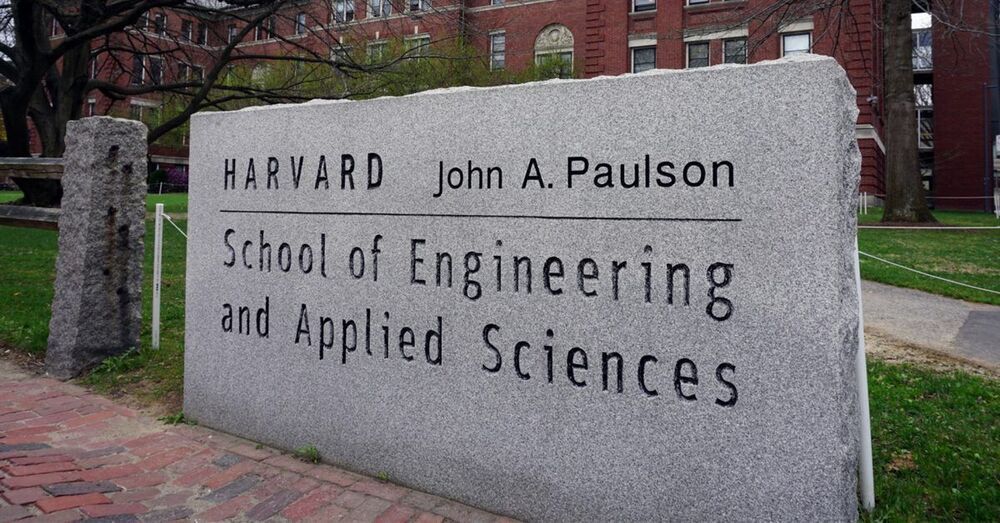Here’s how a lightweight, prefabricated concrete slab is signaling a revolution in architecture.



Using an advanced microscopy technique, Texas A&M researchers have uncovered a twin boundary defect in a soft polymer that has never been observed before.
Texas A&M University scientists have for the first time revealed a single microscopic defect called a “twin” in a soft-block copolymer using an advanced electron microscopy technique. This defect may be exploited in the future to create materials with novel acoustic and photonic properties.
“This defect is like a black swan — something special going on that isn’t typical,” said Edwin Thomas, professor in the Department of Materials Science and Engineering. “Although we chose a certain polymer for our study, I think the twin defect will be fairly universal across a bunch of similar soft matter systems, like oils, surfactants, biological materials, and natural polymers. Therefore, our findings will be valuable to diverse research across the soft matter field.”

Discover the advantages of 3D printed jewelry, the best materials, and get inspired by the most interesting projects!

In new research, Texas A&M University scientists have for the first time revealed a single microscopic defect called a “twin” in a soft-block copolymer using an advanced electron microscopy technique. This defect may be exploited in the future to create materials with novel acoustic and photonic properties.
“This defect is like a black swan—something special going on that isn’t typical,” said Dr. Edwin Thomas, professor in the Department of Materials Science and Engineering. “Although we chose a certain polymer for our study, I think the twin defect will be fairly universal across a bunch of similar soft matter systems, like oils, surfactants, biological materials and natural polymers. Therefore, our findings will be valuable to diverse research across the soft matter field.”
The results of the study are detailed in the Proceedings of the National Academy of Sciences (PNAS).

GMG and the University of Queensland presented a graphene aluminum-ion cell that charges faster than Li-ion batteries. It also requires no cooling.

On 27 June 1918, two young German soldiers—one age 18, the other 17—died in Berlin from a new influenza strain that had emerged earlier that year. Their lungs ended up in the collection of the Berlin Museum of Medical History, where they rested, fixed in formalin, for 100 years. Now, researchers have managed to sequence large parts of the virus that infected the two men, giving a glimpse into the early days of the most devastating pandemic of the 20th century. The partial genomes hold some tantalizing clues that the infamous flu strain may have adapted to humans between the pandemic’s first and second waves.
The researchers also managed to sequence an entire genome of the pathogen from a young woman who died in Munich at an unknown time in 1918. It is only the third full genome of the virus that caused that pandemic and the first from outside North America, the authors write in a preprint posted on bioRxiv.
“It’s absolutely fantastic work,” says Hendrik Poinar, who runs an ancient DNA lab at McMaster University. “The researchers have made reviving RNA viruses from archival material an achievable goal. Not long ago this was, like much ancient DNA work, a fantasy.”


Moore’s Law, the famous prediction that the number of transistors that can be packed onto a microchip will double every couple of years, has been bumping into basic physical limits. These limits could bring decades of progress to a halt, unless new approaches are found.
One new direction being explored is the use of atomically thin materials instead of silicon as the basis for new transistors, but connecting those “2D” materials to other conventional electronic components has proved difficult.
Now researchers at MIT, the University of California at Berkeley, the Taiwan Semiconductor Manufacturing Company, and elsewhere have found a new way of making those electrical connections, which could help to unleash the potential of 2D materials and further the miniaturization of components—possibly enough to extend Moore’s Law, at least for the near future, the researchers say.

To combat this, Li and his team at Harvard have designed their solid-state battery with a multilayer approach that stacks its materials of varying stabilities between the anode and cathode. Much like a sandwich. This multi-material battery sandwich helps alleviate the penetration of lithium dendrites by controlling and containing them rather than preventing them altogether.
As you can see from the image above, the Harvard team has simplified its battery design to a form that’s more our speed. In this case, a BLT sandwich. The top slice of bread represents the lithium-metal anode, followed by lettuce appropriately representing a coating of graphite. The two layers of tomatoes represent the first electrolyte, protecting the delicious middle layer of bacon as the second electrolyte. Everything sits upon the bottom slice of bread, or the cathode. Is anyone else suddenly hungry for batteries?
In this design, dendrites are able to grow through the graphite (lettuce) and first electrolyte (tomato) but are halted when they reach the second electrolyte (bacon), thus preventing the dendrites from shorting the entire battery. This multilayer approach provokes chemistry that makes the second electrolyte too tight for the dendrites to penetrate. Furthermore, the Harvard researchers say this same chemistry can backfill the holes made by dendrites, essentially making the solid-state battery self-healing. Is there anything better than a sandwich that can regenerate itself? Honestly.

After spending nearly two-and-a-half years together, a NASA spacecraft will bid farewell to its asteroid companion Monday and begin the long journey back to Earth.
The OSIRIS-REx spacecraft is NASA’s first asteroid sample return mission, and it carries a generous amount of material collected from the near-Earth asteroid Bennu.